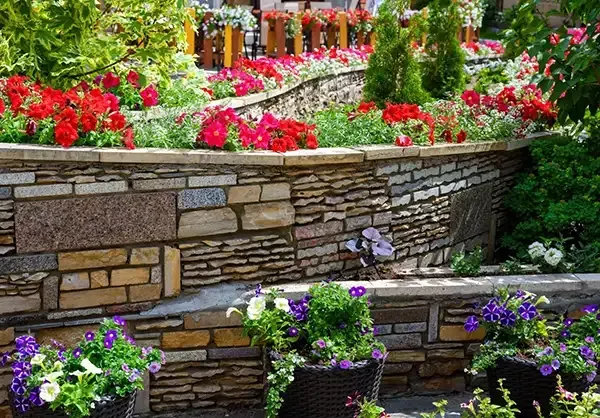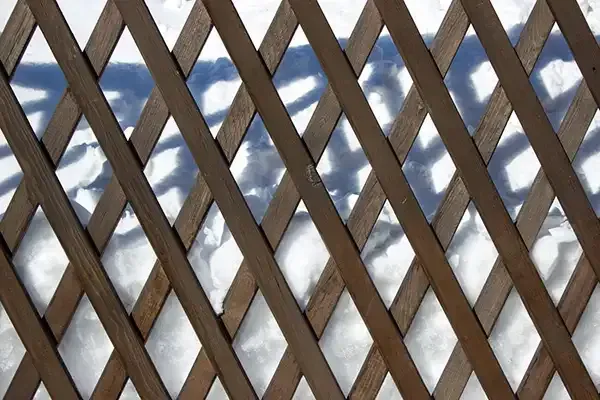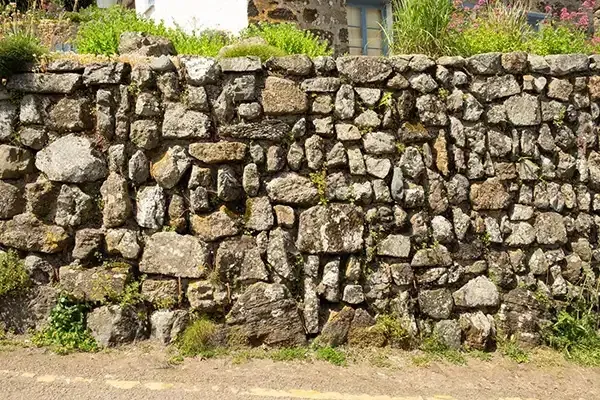How to Choose the Right Concrete Retaining Wall for Your Property
When it comes to choosing the right concrete retaining wall for your property, it's essential to start by assessing your specific landscape needs.
Consider factors like topography, drainage, and soil type. Each of these elements influences the wall's functionality and appearance.
As you weigh your options, think about how the design aligns with your taste and the practical requirements of your space.
There's more to explore about installation and long-term maintenance that could impact your decision.
Assessing Your Landscape Needs
Before embarking on a retaining wall project, carefully assess your landscape's specific needs and considerations.
1. Topography and Soil Conditions:
- Slope Analysis: Determine the slope of the land and identify areas where soil erosion or instability is occurring.
- Soil Type: Analyze the soil type, including its composition, drainage, and bearing capacity. Different soil types require different wall designs and construction methods.
- Soil Stability: Evaluate the stability of the soil. Consider factors like soil compaction, moisture content, and potential for frost heave.
2. Drainage Considerations:
- Water Flow: Analyze how water flows across the property and identify potential drainage issues.
- Water Collection: Plan for proper drainage behind the wall to prevent water buildup and hydrostatic pressure.
- Drainage Solutions: Consider incorporating drainage features like weep holes, drainage pipes, or gravel backfill to ensure proper water drainage.
3. Purpose and Function:
- Erosion Control: Determine if the primary purpose of the wall is to prevent soil erosion and stabilize slopes.
- Creating Usable Space: Assess whether the wall will create additional usable space, such as terraces for gardens or patios.
- Aesthetic Appeal: Consider the desired aesthetic impact of the wall and how it will complement the overall landscape design.
4. Budget and Scope:
- Determine Budget: Establish a realistic budget for the project, considering materials, labor, and any potential permits or engineering fees.
- Scope of Work: Define the scope of the project, including the height, length, and complexity of the wall.
5. Local Regulations and Permits:
- Building Codes: Research and comply with local building codes and regulations regarding retaining wall construction.
- Permits: Obtain any necessary permits from local authorities.
6. Environmental Considerations:
- Impact on Vegetation: Consider the potential impact of the wall on existing vegetation and plan accordingly.
- Environmental Impact: Choose environmentally friendly materials and construction methods whenever possible.
By carefully assessing these factors, you can ensure that the retaining wall meets your specific needs, addresses your landscape challenges, and enhances the beauty and functionality of your property.
Exploring Design Options
Exploring design options is crucial to creating a retaining wall that is both functional and aesthetically pleasing. Here's a more comprehensive look at design considerations:
Style and Finish:
- Smooth Finish: Offers a sleek, modern look.
- Textured Finish: Provides a more rustic or natural appearance.
- Stamped Concrete: Allows for the creation of various patterns and textures, such as brick, stone, or wood.
- Exposed Aggregate: Exposes the natural beauty of the aggregate (small stones) within the concrete.
Color and Texture:
- Color Selection: Choose colors that complement your home's exterior and the surrounding landscape.
- Texture Variations: Explore different texture variations to add visual interest and depth.
Height and Tiering:
- Varying Heights: Consider creating tiered retaining walls for a more dynamic and visually interesting effect.
- Height Restrictions: Be mindful of local building codes and regulations regarding maximum retaining wall heights.
Decorative Elements:
- Planters: Incorporate built-in planters into the wall design.
- Lighting: Integrate lighting features, such as accent lighting or pathway lighting, to enhance the wall's appearance and safety.
- Water Features: Consider incorporating water features, such as small fountains or waterfalls, into the wall design.
Sustainability:
- Use of Recycled Materials: Explore the use of recycled materials, such as recycled concrete or crushed stone, in the construction of the wall.
- Low-Impact Construction: Minimize the environmental impact of construction by using sustainable practices and minimizing site disturbance.
By carefully considering these design options, you can create a retaining wall that is not only functional but also a beautiful and valuable addition to your landscape.
Understanding Installation and Maintenance Requirements
Before you start your
concrete retaining wall project, it's crucial to understand the installation and maintenance requirements that come with it.
Permits and Regulations:
- Obtain Necessary Permits: Research and obtain any necessary permits from local authorities before beginning construction.
- Comply with Building Codes: Ensure the wall complies with all local building codes and regulations regarding height, setbacks, and materials.
Foundation and Drainage:
- Proper Excavation: Excavate the trench for the wall to the appropriate depth and width.
- Solid Foundation: Ensure a solid and stable foundation for the wall by properly compacting the base material.
- Drainage System: Install an effective drainage system, such as a gravel backfill or a perforated drain pipe, to prevent water buildup behind the wall.
Construction and Materials:
- Professional Installation: Consider hiring a qualified contractor with experience in retaining wall construction.
- High-Quality Materials: Use high-quality concrete, reinforcement (if necessary), and other materials as recommended by the manufacturer and local building codes.
- Follow Manufacturer Instructions: Carefully follow the manufacturer's instructions for mixing, pouring, and curing concrete.
Ongoing Maintenance:
- Regular Inspections: Conduct regular inspections of the wall for signs of damage, such as cracks, leaning, or erosion.
- Drainage Maintenance: Ensure the drainage system remains clear and functional.
- Vegetation Control: Control vegetation growth around the wall to prevent root intrusion and erosion.
- Repair and Maintenance: Address any signs of damage promptly to prevent further deterioration.
- Professional Maintenance: Consider scheduling regular maintenance checks with a qualified contractor for more complex inspections and repairs.
By carefully considering these installation and maintenance requirements, you can ensure the longevity and effectiveness of your concrete retaining wall, protecting your property and enhancing its aesthetic appeal for years to come.
Choosing the right concrete retaining wall for your property involves careful consideration of your specific landscape needs, design preferences, and installation requirements.
By assessing your site, exploring various design options, and understanding the importance of proper installation and maintenance, you can make informed decisions that result in a functional, aesthetically pleasing, and long-lasting retaining wall that enhances the beauty and value of your property while addressing your specific landscape challenges.
You might also like
Book a Service Today
We will get back to you as soon as possible
Please try again later
Get In Touch With A Professional Near You Today!
Having a retaining wall installed is able to provide a large increase in housing value to a homeowner and provides a solution that gets your retaining wall design project underway. As a homeowner, you should know that a landscape wall needs to look its best and when it does, it will most definitely add to the aesthetic of your home. Call one of our trusted team members today for a Free Quote!
Precision Retaining Walls
The region's leading professional Retaining Wall Company.
Call Us: 918-842-7333
All Rights Reserved | Tulsa Precision Walls |


